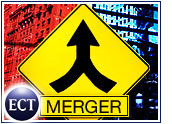
No one expected all of the thousands of dot-coms that sprang up, seemingly out of nowhere, to survive. No one even expected the majority of them to survive.
But how much consolidation is too much? Is the e-commerce landscape in danger of turning from a forest too thick to see through into a grove with just a few very large trees?
Good and Bad
E-commerce is growing, all right, but some of the giants plying the trade are growing a lot faster than the industry as a whole. They’re eating up market share, taking it away from smaller competitors or just buying up their share when necessary.
Take Amazon, for instance. In the middle of what is now a legendary fourth quarter, Amazon took over both Egghead.com and OurHouse.com. Neither purchase was heralded much by the e-tailer.
In fact, the OurHouse purchase didn’t even warrant a press release. The company just started directing traffic to the Amazon site, so OurHouse customers found themselves in Amazon’s tools and hardware aisle.
Detour Ahead
Likewise, surfing to Egghead.com meant a detour into Amazon’s electronics aisle.
Now, aside from a few diehards in each case, customers aren’t complaining too loudly. Amazon does e-tail well. The company knows how to treat its customers, and if CEO Jeff Bezos keeps his pledge to be a retailer that always tries to lower prices, no one will protest.
But think about it another way: In a matter of days, two independent e-tailers were quietly folded into the Amazon brand. That’s a rapid attrition of online choices.
EBay Nation
The other huge name in e-commerce, of course, is EBay. The auction giant reported that it helped move more than US$2.7 billion worth of goods during the fourth quarter.
EBay is only the conduit through which all that merchandise moved; thousands of sellers were involved. But all those sellers are collected under the EBay banner, and that banner seems likely to exert more influence over its community as time passes, as shown by the company’s recent decision to hike fees.
Here again, no major complaints from consumers. The EBay system works both for buyers and sellers, so almost everyone is happy.
Together, EBay and Amazon were responsible for 22 percent of all fourth-quarter e-tail sales in the United States, according to Forrester Research. That’s a big chunk, but it’s hardly enough to set off alarm bells.
Invisible Line Ahead
So, where is the line across which healthy and natural consolidation becomes a little more dangerous? How will we know when we get there?
It’s something to think about. After all, both Amazon and EBay have vowed to keep growing, and every day it seems that another smaller player in the e-commerce show takes a bow.
Last week it was Beyond.com, the perky little software sales site that gave us ads featuring naked people in their home offices. The company filed Chapter 11 and agreed to be acquired after failing to make a go of it as a services provider.
Next week, it will be someone else. Meanwhile, companies aren’t exactly bashing down the door to enter the e-commerce market. Brick-and-mortar retailers like Wal-Mart no doubt will help balance the scales, but some traditional retailers have been less than aggressive in moving onto the Web.
Warning Lights
When will we know it’s time to start worrying? My guess is that it won’t be when a certain percentage of online sales go to just a couple of major players. There is no magic number.
Instead, we’ll know we should be concerned when e-commerce as an industry sector becomes interchangeable with the names of a few big players. Or when the e-commerce landscape just isn’t interesting to look at anymore. Luckily, that potential scenario is still a long way off.
What do you think? Let’s talk about it.
Note: The opinions expressed by our columnists are their own and do not necessarily reflect the views of the E-Commerce Times or its management.



























































Social Media
See all Social Media